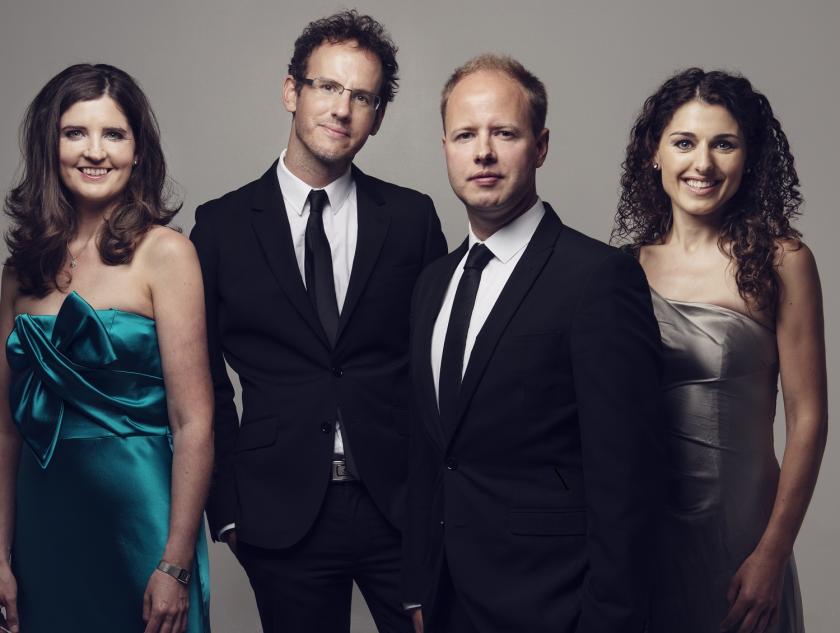This programme was a bit of a calling card from the Carducci Quartet. They have previously recorded all three works, and the three composers, Haydn, Shostakovich, Beethoven, clearly play to their strengths. Add to that a modest running time, the Shostakovich Seventh and Beethoven op. 95 are the two composers’ shortest quartets, and the result is a perfect offering for casual Sunday morning recital.
Not that the Carduccis ever rest on their laurels. They have a distinctive tone, rich and darkly burnished with real complexity and depth, and they bring a keen interpretive sensibility to every phrase. Even Haydn’s ever-familiar “Sunrise” Quartet was full of surprises here, and the Beethoven too was deliciously unpredictable. Some quartets are defined by the playing style of their first violinists, others are more rigorously collective. Listening to their “Sunrise” Quartet, the Carduccis seem to mix both approaches. The slow introduction is very much a violin solo, and here Matthew Denton played with warm vibrato and generous phrasing while the other three players kept the backing straight and solemn. But the transition into the fast main section was seamless, and from here the four players worked as equals.
The Carduccis filled the music with contradictions and ambiguities, while always keeping everything on a small and intimate scale
Haydn is unusually generous in this quartet in spreading the melodic lines around the ensemble, and every time another player took the opening melody, they were similarly expressive. Balances were always good. The quartet’s tonal control is exceptional. They are capable of a big, round tutti, but they keep this in reserve, playing most passages with a darker, more veiled sound. That allows them to open up into moments of sonic clarity. In the slow movement of the Haydn the effect was transcendental. But then came the Menuet, which the players took the other way, presenting it as a rustic Ländler, with just the barest veneer of Viennese sophistication, another welcome surprise.
The Shostakovich Seventh is another work that benefits from the quartet’s keen sense of texture and mood. In the first movement, a spiky opening motif vies with a lyrical background idea, and the tonal contrast achieved here made the effect positively schizophrenic. Shostakovich dedicated this work to his recently deceased first wife, and many have read it as a portrait of their complex and fractious relationship. The Carduccis created the effect by filling the music with contradictions and ambiguities, while always keeping everything on a small and intimate scale. Most impressive was the transition into the finale, which fitfully erupts out of the quiet textures of the second movement. Again, the Carduccis’ ability to jump between those soundworlds, without compromising or playing down either, heightened the psychological effect.
Beethoven, too, was presented with big contrasts surprising shifts. The opening was fast and fierce, too fast to my taste but certainly done with conviction. That pace highlighted the concision of the first movement, the counterpoint dense and rigorously argued. The Allegretto, in contrast, was presented as a long, continuous flow of melody. Even at modest dynamics, the effort required to sustain the beautifully even texture was evident, and the quartet’s intonation, immaculate up to here, began to falter. Faster tempos again for the scherzo and finale. The players maintained a well-defined rhythmic profile throughout the finale, and yet even with their emphatic articulation, the music was impressively agile. And Beethoven saves the biggest surprise for last, upping the tempo again for a fast and light coda. Once again, the players rose to the challenge, turning on a pin to launch the final Allegro, the coda another demonstration of the ensemble’s trademark energy and precision.














Add comment